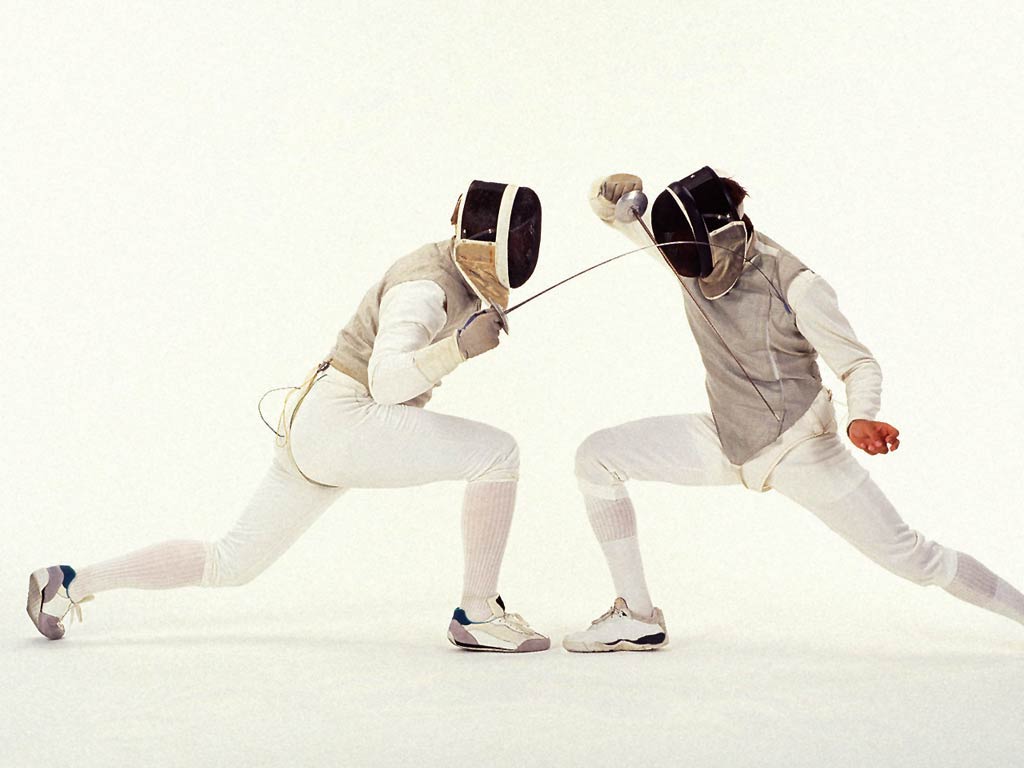Fencing is a very easy sport to start at any age. It is fun, exciting and athletic; it keeps the body and the mind fit so if you’re looking to get active physically and mentally then this is the sport for you!
There are three swords or weapons in fencing and each one has its own rules and strategies:
Foil: a light, thrusting weapon that targets the torso (including the back), neck, and groin, but not the arms or legs. The foil has a small protective, circular hand guard (to shield the hand from direct stabs). In foil fencing, touches can only be scored using the tip of the blade. Using the side of the foil does not score a touch and also does not halter the action. Any touches landed outside of the target area (off-target touches) do halt the action, but are not scored. Only a single touch can be scored by either fencer at any one time. If both fencers happen to land valid touches at the same time, the referee will use the rules of “right of way” to determine which fencer scores the touch. If the right of way cannot be determined by the referee then neither fencer will score the touch.
Épée: a thrusting weapon like the foil, but much heavier. In épée fencing, the entire body is a valid target. The épée has a large protective, circular hand guard that extends towards the pommel and pretty much covers the hand, which unlike in foil fencing, is a valid target in épée fencing. The rules of épée fencing are initially the same as foil fencing, all though there is no concept of an off-target touch, other than if the fencer accidentally strikes the floor. Also, unlike foil fencing (and unlike sabre fencing), épée fencing does not use the “right of way” rule, and therefore allows both fencers to simultaneously strike each other. However, if the score is tied in a match at the last point and both fencers properly strike each other at the same time, neither are score the touch.
Sabre: a light thrusting and cutting weapon that targets the entire upper body (above the waist), aside from the hands. The sabre has a hand guard extending from the pommel to the base of where the blade connects to the hilt and this is generally turned outwards during sport to protect the sword arm. Unlike foil and épée fencing, in sabre fencing hits with the point of the blade or the edges are valid. As in foil fencing however, off-target touches are not scored, but they do not halt the action. Also like foil fencing, the use of the “right of way” rule is employed by the referee.
As expected in a sport that involves swords, protective clothing must be worn when fencing. The complete fencing kit includes:
- A form-fitting jacket, with a strap (known as a croissard) which goes between the legs; however, in sabre fencing jackets are cut along the waist. A small band of folded fabric is sewn in around the collar to ensure the opponent’s blade does not slip beneath the mask and is also sewn along the jacket upwards towards the neck.
- An underarm protector, known as a plastron, which is worn underneath the jacket and provides doubled protection on the sword arm side and upper arm.
- A single glove for the sword arm with a gauntlet to prevent blades slipping beneath the sleeve and causing injury. The glove also protects the hand and provides a good grip.
- Breeches (or knickers) which are a pair of short trousers, ending just below the knee. The breeches are required to have a 10 cm overlap with the jacket to ensure the blade does not slip beneath either (most are equipped with suspenders/braces to hold them up).
- Knee-length (or thigh high) socks.
- Flat soled shoes which have reinforcement on the inside of the back foot and heel of front foot to prevent wear as a result of constant lunging.
- A mask, including a big to protect the neck. Be careful when selecting a mask as some modern types (ones with see-through visors in the front) are banned in foil and épée fencing.
- A plastic chest protector is mandatory for female fencers, but is also available for male fencers.
- Worn only in foil and sabre fencing, a lamé (electrically conductive material) is worn over the entire target area to assist with scoring. In foil fencing the lamé is sleeveless, but in sabre fencing it has sleeves and is cut across the waist.
If you are interesting in taking up fencing and want to find a club near you then click here to do so.
For a brief introduction into fencing techniques click here.

